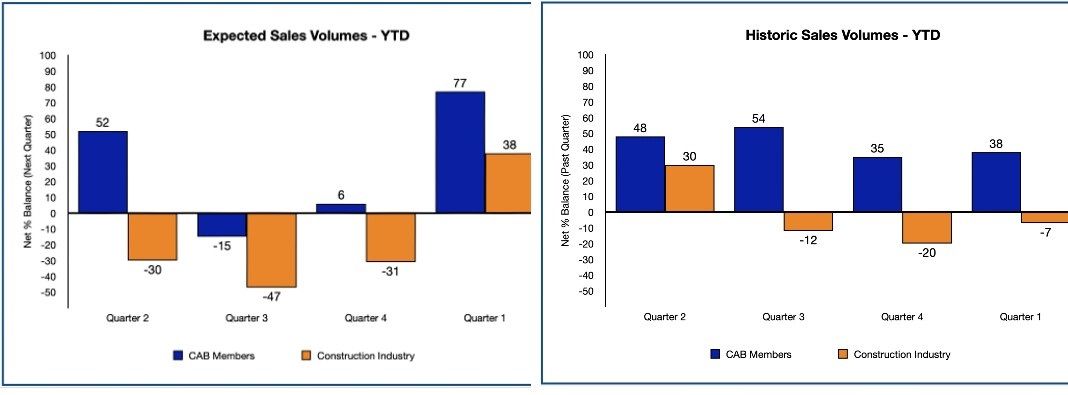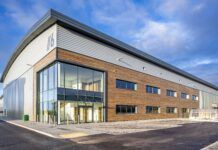
Members of the Council for Aluminium in Building (CAB) are reporting growth in demand for aluminium fenestration and facades. In the first quarter State of Trade Survey, just 7% of respondents claimed that historic sales volumes were lower than the past quarter. This compares to 20% of respondents claiming that historic sales volumes were lower in the previous Q4 report. CAB members have continued to show historic sales volumes on net balance increases for this quarter, slightly higher at 38% compared to 35% in the last quarter.
Expected sales volumes are the most optimistic for CAB members for the year, with 77% on net balance expecting increases in sales volumes in the next quarter. This is up significantly from the previous quarter, where CAB members reported that just 6% expected sales volume increases. Backing this huge shift is the wider construction supply chain: 38% of respondents expect sales increases compared to a reduction in sales volumes in the previous quarters report of 31%.
Quarter-on-quarter sales volumes for CAB members shows prominent growth, with 38% reporting ‘Up by over 5%’ compared the previous quarter. The emphasis on growth is even greater on year-on-year sales volumes, indicating that the fenestration industry is emerging from a slight dip.
 Historic unit costs show a slight softening over the last 12 months on net balance, with 54% of CAB members stating increases on a quarterly basis. Expected unit costs show a slight slip, softening with 62% on net balance.
Historic unit costs show a slight softening over the last 12 months on net balance, with 54% of CAB members stating increases on a quarterly basis. Expected unit costs show a slight slip, softening with 62% on net balance.
Whilst 46% of members now report raw materials as an influence on cost, this is down from circa 70% in the previous 12 months. Whilst energy costs have softened slightly, the cost emphasis remains high on wages and salaries, with 92% reporting it to be the most influential cost factor this quarter. This has remained high for the last 12 months.
Likely constraints on activity over the next 12 months remain squarely on continued market demand. Capacity also raises it head as a constrain at 23% this quarter, not seen in the past Q3 and Q4 in 2022, suggesting some respondents are already working near to their capacity. Labour availability has softened over the year: 8% reported it as a constraint compared to 15% 12 months ago.
CAB members continue to exceed the expected capacity utilisation of the wider construction supply chain. Also, whilst this quarter sees 17% of net respondents on balance increasing their labour force in the last year, 67% state that they are seeking to increase their labour force. This is a reversal of 12 months ago, where 62% had increased their labour force in the previous 12 months.
Labour costs remain a very high cost for both CAB members and the wider construction supply chain. Capital investment and therefore confidence in the fenestration market across the membership also remains high, with 75% of respondents stating that they have and continue to invest in plant and machinery. This investment is closely followed by 50% investing in new product development.
Phil Slinger
Chief executive of the Council for Aluminium in Building (CAB)



